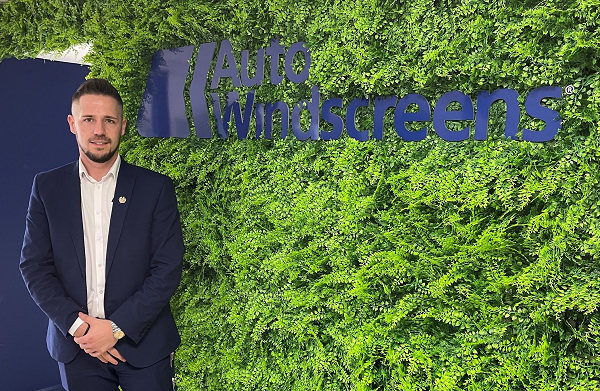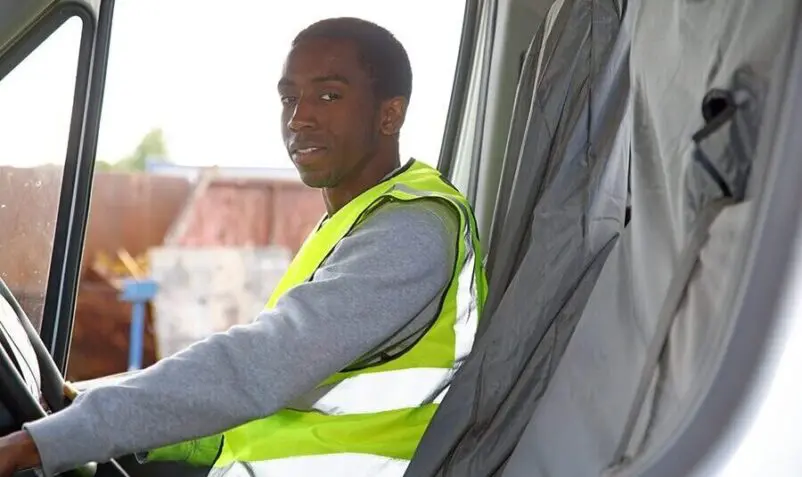


Fleet Size
LCVs: 390
Cars: 50
Auto Windscreens repairs and replaces automotive glass for all types of vehicles. It also undertakes Advanced Driver Assistance System (ADAS) calibrations following windscreen replacements, to ensure technology such as forward-facing cameras, lane departure or speed recognition sensors continue to operate correctly. It has 390 LCVs and 50 company cars. Business Support Director, Shaun Atton, tells us how the company has reaped benefits with its work-related road risk schemes.
Summary of Achievements
Incident Rate
DOWN 32%
Over 3 years
Cost of Collisions
DOWN 19%
Over 3 years
Demonstrating leadership in driver safety
“Road safety is important to us for a number of reasons. Primarily we want our staff to be able to work in a vehicle suitable for their task, to do their job in comfort and return home to their families safely in the evening. Likewise, we want to help protect other road users and the general public, as we focus on fixing glass damage and getting our customers back into their vehicles. ”
Shaun Atton,
Business Support Director, Auto Windscreens
More details
Partners




Auto Windscreens repairs and replaces automotive glass for all types of vehicles. It also undertakes Advanced Driver Assistance System (ADAS) calibrations following windscreen replacements, to ensure technology such as forward-facing cameras, lane departure or speed recognition sensors continue to operate correctly. It has 390 LCVs and 50 company cars. Business Support Director, Shaun Atton, tells us how the company has reaped benefits with its work-related road risk schemes.
“Road safety is important to us for a number of reasons. Primarily we want our staff to be able to work in a vehicle suitable for their task, to do their job in comfort and return home to their families safely in the evening. Likewise, we want to help protect other road users and the general public, as we focus on fixing glass damage and getting our customers back into their vehicles.”
Shaun Atton, Business Support Director, Auto Windscreens
Business Benefits
- 19% cut in cost of collisions.
- Incidents per 100,000 miles dropped from 2.8 (2019) to 1.7 (2022).
Auto Windscreens has 72 sites working across 24 geographical areas. Its technicians visit customers’ homes and workplaces to repair and replace vehicle glass, and an increasing proportion of work is conducted at the company’s own sites, primarily for ADAS calibration and more complex jobs. The business therefore has a large footprint across the UK.
Its mobile technicians keep their LCVs at home, travel into their local centre for necessary supplies and conduct repairs at a variety of locations before returning home at the end of their shift.
This brings the dual challenges of a remote fleet and a remote workforce.
Although more than 40% of its work is now conducted at its service centres, the fleet has continued to expand due to increasing demand.
The 50 company cars are primarily given as part of a recruitment package to senior managers, although some users have operational or sales roles.
Cameras and telematics
In 2019, Auto Windscreens completed its roll-out of VisionTrack’s forward-facing cameras and telematics solution, through which it measures driver performance.
All of the data for fleet management and driver performance is collated in a management information tool called Microsoft Power BI. This allows the team to see the entirety of a driver’s profile, including licence checks, points, infringements and ‘exception events’, making it easier to see patterns of behaviour or potential safety issues.
High level reporting, or specific flags against drivers are passed to line managers for action.
The company also runs driver league tables, by region, which captures the drivers’ combined scores. Shaun says this is a great incentive for the drivers to improve.
The business focuses on coaching support and incentivising good behaviour with reward schemes. Line managers are encouraged to acknowledge good driving, and each year the best drivers are rewarded with shopping vouchers.
“We demonstrate to the less skilled drivers how the winners achieve such good performance,” he says. “We want to inspire them to become better drivers rather than penalise them.”
The cameras add great value to the telematics data because they give a complete context of the driving behaviour, which has shown up as ‘exception events’. “Harsh braking can be the result of poor anticipation, but it could also be a life-saving action,” he says. “Without the full context, you cannot always be sure whether you are viewing safe or poor driving.”
The company tracks behaviours relative to their frequency and duration. Moderate speeding for a few seconds may be a simple over-taking manoeuvre, but sustained or significant speeding will be flagged for intervention.
More than three similar instances within a specific timeframe will always trigger a conversation with the driver.
New vehicle spec
Another tack the company has taken is to upgrade its Transit Custom vans to the Transit Trend, which offers far greater driver comfort. They are also equipped with ADAS technology, including emergency braking, lane assist and speed sign recognition.
This has brought multiple benefits including:
- Better staff retention
- A greater sense of pride and ‘ownership’ in the vehicle
- Drivers seeing the vehicle as their ‘place of work’
- A more attractive recruitment offer
- The on-road benefits of ADAS.
Building messaging into the business
The camera footage and telematics data always form part of the new recruit inductions, so that new drivers understand how the systems work, and what information the managers will receive from it.
“It is essential to educate people about your expectations and policies, but also about the technology you use,” says Shaun. “We can’t expect good performance without individual buy-in.”
He includes both positive stories where drivers have been praised for their actions or exonerated from fault, as well as examples that have become opportunities to educate.
Every initiative has been consultative, so that all staff understand the purpose, limits and potential benefits.
The business has also worked hard to make fleet communication a key part of the operations.
Line managers share messages with drivers as part of daily briefings. Every one-to-one appraisal and meeting includes a review of driving performance.
“Embedding fleet safety into the organisation has been a big project but it is there now, and it’s something which is spoken about every day,” says Shaun.
Electrification
Auto Windscreens has changed its options for company cars so that all new choices are electric and will have a fully electrified car fleet by 2026.
Its van fleet will also be electrified, but the roadmap is still being finalised. Although Shaun has identified an eLCV with sufficient range, the company needs a range of bespoke external racks, wet weather canopies and a power source for equipment, all of which could affect range and payload. It will start conducting live trials as soon as suitable vehicles are available.
Its target is to reach net zero by 2045.
Driver fatigue and 24/7 service
Auto Windscreens operates an emergency out of hours service, however the number of night-time call-outs has shrunk considerably, as while customers can book work 24/7 through the service centre, most wait to book the next day.
This eliminates the issues of night-time driver fatigue or broken sleep for its technicians.
Managing the remote fleet
Auto Windscreens has introduced a management system which highlights essential activities for all drivers and managers throughout the company. The drivers can access their daily walk-round checks on their handheld PDAS, which also contains their workflow. Drivers conduct a more in-depth survey of the van each week, and once a month each vehicle is physically inspected by a manager, along with photographic evidence. All of this is auditable through the system, which also contains health and safety, and site protocols.
Insurance benefits
Although the company has not yet seen a reduction in premiums because of inflation, its premiums have held steady.
In 2019 its incidents per 100,000 miles stood at 2.8, compared to 1.7 at the end of 2022.
Its claims cost has dropped by 19% since 2019. The type and severity of incident has changed, with the majority of incidents now being low speed manoeuvres, which involve some vehicle damage but no injury. Impacts at junctions, and rear end collisions have reduced.
Shaun attributes much of the improvement to the extensive training the company conducted around issues like tailgating, safe pulling-out and distracted driving. Low speed manoeuvres will continue to be a future focus for the fleet in terms of education and training.
Fuel management
The company has carefully managed its fuel usage and mileage, concentrating on specific focus areas such as:
- Better driver behaviour
- Less idling
- Better job density on journeys.
“We have educated drivers about the value of fuel, putting the monetary cost in terms of real-world purchasing power,” says Shaun, “as well as its impact on emissions. We put pounds and pence in front of them and ask: what could you buy with that? It’s a real eye-opener, and helps support our requests to cut idling and drive more sensitively.”







